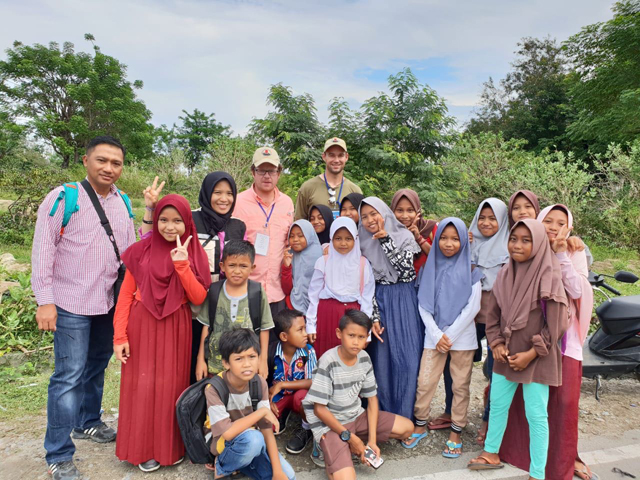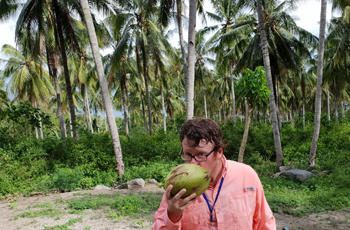16 February 2021–Ben Mason has been a member of four post-earthquake reconnaissance teams, dispatched to places like Nepal after a magnitude 7.8 earthquake in 2015 and Japan after the 2011 magnitude 9.0 Tohoku earthquake and tsunami to gather information on how these major events occurred and what steps can be taken to mitigate the impact of future earthquakes.
The visits are an invaluable source of data for Mason and his colleagues, “but the emotional toll that it takes on you can’t be understated,” he says. After the Tohoku earthquake, “I went up to the plain where the tsunami hit and they had mounded up everybody’s personal belongings,” he recalls. “You saw hobby horses, and toys and everybody’s life just reduced to this huge mound of rubble, and the whole town wiped out, only the foundations left.”
During Mason’s last reconnaissance trip, walking along the massive and deadly flow slides in Palu after the 2018 magnitude 7.5 Sulawesi earthquake and tsunami, “I ended up that time smoking a pack of cigarettes during the week, which I don’t smoke—like you’ll never see me smoke here in the U.S.—just to try to calm down,” he says.

“But on the other side of that coin is the motivation to learn more,” he adds. “We’re the privileged ones that got to go and come back.”
Mason is a geotechnical earthquake engineer, an associate professor at Oregon State University, and during 2021, a research civil engineer at the United States Geological Survey’s Geologic Hazards Science Center. His primary research focuses on natural hazards engineering, and the impact of multihazard events on coastal buildings and infrastructure. He studies the interactions between these hazards, using a systems-level approach. For instance, soil liquefaction caused by an earthquake can make a building’s foundations less stable. But add a tsunami to the mix, he explains, “and now we need to actually think about the transport of the sediment, and especially what that means for stability when it’s moved around bridges and buildings.”
Figuring out these effects involves a combination of numerical modeling, lab experiments with model systems like soil and water-filled centrifuges, and fieldwork in places like Palu to collect real-world data. The ultimate goal would be to measure what’s happening in and to the soil during an earthquake and tsunami, he notes, “but we’re still in the stage where we’re trying to model one hazard at a time, and numerically estimate what’s going to happen during both of them.”
“My career is like a circle, and occasionally I’m on one side of the circle where I’m doing a lot of experiments and fieldwork,” he says. “Right now, especially with COVID keeping us tied down, I’m on the numerical side, where I’m trying to build models to understand what we’re seeing in the experiments.”

Mason says a series of “happy mistakes” brought him to the field of hazards research. None of his family members were engineers or studied earthquakes, although his family lived next to a granite quarry in Georgia where during blasting “you could actually see the wave as it went through the house,” he recalls. A summer surveying job in high school piqued his interest in civil engineering, and as an undergraduate at Georgia Tech he worked in a lab that used ultrasonic waves to detect damage in cement.
That experience started his “real love of wave propagation research,” but he wanted to study the topic in a way that affected more people, he says.
Mason recently received his professional engineering license in Colorado, which will allow him and his students to become more involved in consulting work. He has also increased his public outreach activities, writing several op-eds and giving public science talks in Corvallis. “Distilling information down to be able to communicate with the public is an incredibly important part of the job, especially as faculty at a land-grant institution,” he says.
“Early in my career I considered myself more of a scientist—here’s my work and if someone can figure out practical applications, that’s great,” Mason adds. “But now I’ve had much more motivation to turn my work into something that be applied, even if it happens 20 to 30 years from now.”
SSA At Work is a monthly column that follows the careers of SSA members. For the full list of issues, head to our At Work page.
